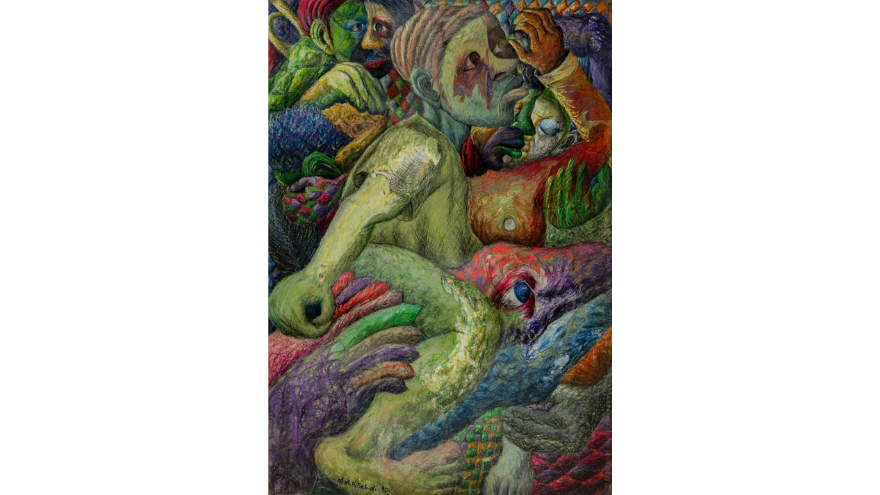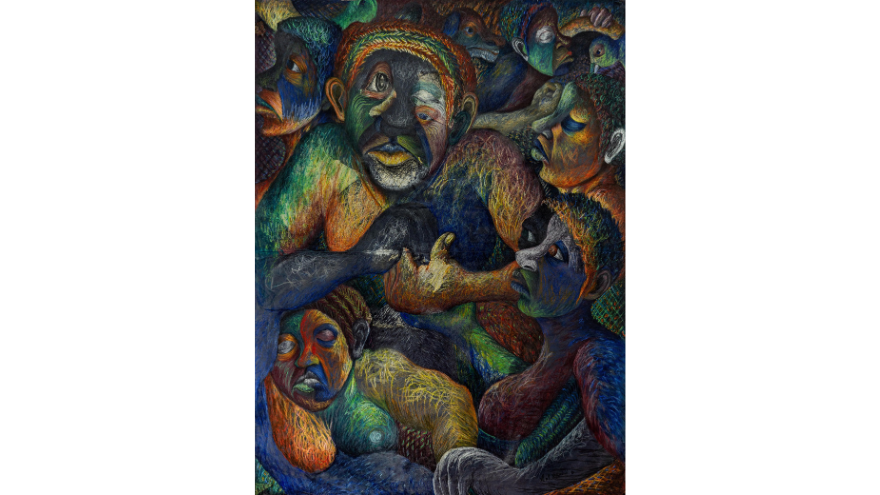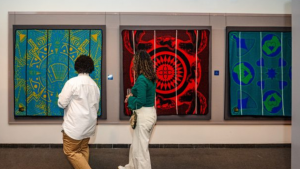A renowned South African artist born in 1943, Mmakgabo Mmapula Mmangankato Helen Sebidi’s artistic journey began in the late 1960s, influenced by her grandmother’s traditional painting techniques. Undeterred by economic challenges, she pursued her passion and used her art to express her observations and experiences of the dehumanising conditions she witnessed first hand in the townships.
In 1991 her artworks took her to Sweden, where she was set to exhibit a series of works to facilitate communication between Sweden and South Africa. During her stay, her artworks disappeared without a trace. They spent 32 years in limbo before being discovered recently at the Nyköping Folk High School.
Now a new exhibition is unveiling these long-lost treasures to the public for the first time. Titled Ntlo E Etsamayang’ (The Walking House) it ishosted by The University of Johannesburg Art Gallery in partnership with Everard Read Gallery and the Embassy of Sweden Pretoria. The exhibition is co-curated by Gabriel Baard and Professor Kim Berman.
On display until 17 May 2024 at the UJ Art Gallery on the University of Johannesburg’s Kingsway Campus in Auckland Park, Ntlo E Etsamayang’ (The Walking House) is a triumphant celebration of Sebidi’s artistic journey, confronting themes of self-positioning, power, responsibility, and healing. The exhibition also reflects on the exchange of knowledge between South Africa and Sweden, highlighting Sebidi’s dedication to facilitating communication of the socio-political conditions that govern day-to-day existence.
‘This exhibition highlights not only Sebidi’s early artistic endeavours, but also a pivotal juncture in her practice, heralding a significant moment of stylistic transformation into a new idiom that would pulsate with energy; part figuration, part abstraction, yet continuously seeking to escape the boundaries of both,’ writes the UJ Art Gallery. ‘Her art depicts the disordered and often uncomfortable process of decolonising, through which she has cultivated a visual language that compels us to feel things and perhaps even devote our own lives to the cause.’
Ntlo E Etsamayang’ (The Walking House) serves not only to display these lost masterpieces, but also as a powerful reminder of the connections forged through artistic expression and cross-cultural dialogue, and a resurrection of a critical chapter in South Africa’s artistic consciousness.
READ MORE








